A Happy Get-Together - Probing Electrochemical Interfaces by Non-Linear Vibrational Spectroscopy
- PMID: 35730530
- PMCID: PMC9796775
- DOI: 10.1002/chem.202200407
A Happy Get-Together - Probing Electrochemical Interfaces by Non-Linear Vibrational Spectroscopy
Abstract
Electrochemical interfaces are key structures in energy storage and catalysis. Hence, a molecular understanding of the active sites at these interfaces, their solvation, the structure of adsorbates, and the formation of solid-electrolyte interfaces are crucial for an in-depth mechanistic understanding of their function. Vibrational sum-frequency generation (VSFG) spectroscopy has emerged as an operando spectroscopic technique to monitor complex electrochemical interfaces due to its intrinsic interface sensitivity and chemical specificity. Thus, this review discusses the happy get-together between VSFG spectroscopy and electrochemical interfaces. Methodological approaches for answering core issues associated with the behavior of adsorbates on electrodes, the structure of solvent adlayers, the transient formation of reaction intermediates, and the emergence of solid electrolyte interphase in battery research are assessed to provide a critical inventory of highly promising avenues to bring optical spectroscopy to use in modern material research in energy conversion and storage.
Keywords: Li-ion battery; electrochemical interface; interfacial electric field; surface reaction; vibrational sum frequency generation spectroscopy.
© 2022 The Authors. Chemistry - A European Journal published by Wiley-VCH GmbH.
Conflict of interest statement
The authors declare no conflict of interest.
Figures
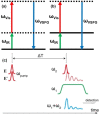







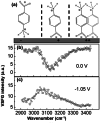


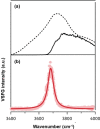
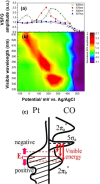




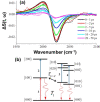



Similar articles
-
Organization of water and atmospherically relevant ions and solutes: vibrational sum frequency spectroscopy at the vapor/liquid and liquid/solid interfaces.Acc Chem Res. 2012 Jan 17;45(1):110-9. doi: 10.1021/ar200152v. Epub 2011 Nov 8. Acc Chem Res. 2012. PMID: 22066822
-
Engineering and Characterization of Peptides and Proteins at Surfaces and Interfaces: A Case Study in Surface-Sensitive Vibrational Spectroscopy.Acc Chem Res. 2016 Jun 21;49(6):1149-57. doi: 10.1021/acs.accounts.6b00091. Epub 2016 May 18. Acc Chem Res. 2016. PMID: 27188920 Review.
-
Theoretical vibrational sum-frequency generation spectroscopy of water near lipid and surfactant monolayer interfaces.J Chem Phys. 2014 Nov 14;141(18):18C502. doi: 10.1063/1.4895546. J Chem Phys. 2014. PMID: 25399167
-
Probing the electrode-solution interfaces in rechargeable batteries by sum-frequency generation spectroscopy.J Chem Phys. 2020 Nov 7;153(17):170902. doi: 10.1063/5.0026283. J Chem Phys. 2020. PMID: 33167651
-
Charge Transfer Dynamics in Organic-Inorganic Hybrid Heterostructures-Insights by Vibrational-Sum Frequency Generation Spectroscopy.Angew Chem Int Ed Engl. 2024 May 6;63(19):e202313574. doi: 10.1002/anie.202313574. Epub 2024 Apr 5. Angew Chem Int Ed Engl. 2024. PMID: 38471070 Review.
References
-
- None
-
- Vayenas C. G., J. Solid State Electrochem. 2011, 15, 1425–1435;
-
- Santos E., Schmickler W., Catalysis in electrochemistry: from fundamental aspects to strategies for fuel cell development, Vol. 7, John Wiley & Sons, 2011.
-
- Hilt G., ChemElectroChem 2020, 7, 395–405.
-
- Janssen L., Koene L., Chem. Eng. J. 2002, 85, 137–146.
Publication types
MeSH terms
Substances
LinkOut - more resources
Full Text Sources

